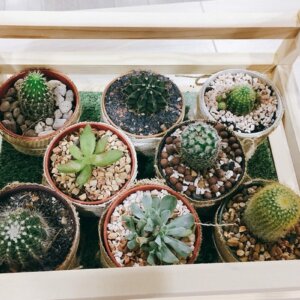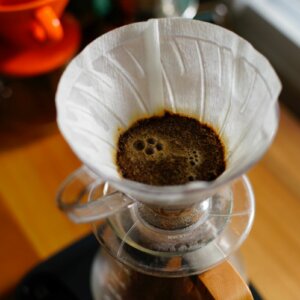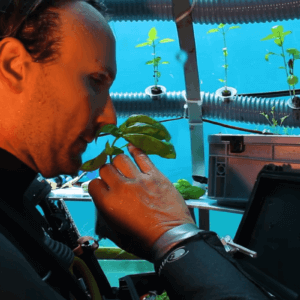
The plastic water bottle market in the United States is worth billions of dollars annually. Plastic water bottles can be purchased just about everywhere and they are quite convenient, but there are many problems associated with them. In fact, when you become aware of the problems and how many there are, you may never buy another bottle of water again.
Facts About Plastic Water Bottles
1. Making water bottles in America uses about 17 million barrels of oil each year, and the tens of billions of plastic bottles produced are mostly not recycled.
2. About 20 billion plastic water bottles wind up in landfills each year or are incinerated.
3. Plastic is made from petroleum or natural gas, which are obviously fossil fuels, and both contribute a great deal to climate change.
4. Bottled water can cost hundreds or even sometimes thousands of times more than tap water.
5. An analysis conducted by Consumer Reports found that bottled water use for one year could cost $346, but the same amount of tap water would only be 48 cents. If you bought that amount of bottled water for 10 years, the cost would be over $3,400.
6. In tests by the NRDC, about one-third of bottle water samples showed some contamination, which means it was not pure or safer than tap water.
7. PET plastic is used in many water bottles, and it is considered generally to be safe. Some research has shown it leaches antimony, but the EPA says not at hazardous levels.
8. There are now millions of tons of plastic in the environment, including water bottles, so if you stop using them or reduce their use, fewer will wind up in places they should not be, like in rivers, lakes, and oceans.
9. Birds, mammals, and sea turtles sometimes ingest bottle caps they encounter in the wild, and are injured or die.
10. Twice as much water is used in the process of producing a plastic water bottle as is contained in the water bottle, when it is sold.
11. Making plastic water bottles produces millions of tons of CO2, which contributes to climate change.
12. Some of the material used to make plastic water bottles comes from companies like British Petroleum and Exxon Mobil.
13. Most bottled water is transported by truck, rail, or ship, so fossil fuels are burned to move it.
14. Some bottled water is tap water that has been put in a plastic bottle. Aquafina is one brand that has been identified in the press as sourced from tap water.
15. Water stored in plastic bottles for 10 weeks contained a chemical that could disrupt hormones in the human body.
16. Plastic water bottles take over 1,000 years to break down and incineration produces toxic fumes.
17. The equivalent of about 50 million barrels of oil is used for the processing, transport, and refrigeration of bottled water every year.
18. #1 polyethylene terephthalate (PET or PETE) bottles are safe only for one use. With additional uses they can leach chemicals into water that may be harmful to human health, such as DEHA, which might cause cancer, and benzyl butyl phthalate (BBP), which might disrupt hormones.
19. Plastic water bottles release toxic chemicals when they decompose.
20. Over $100 billion is spent on bottled water every year globally, but most of that money is wasted because bottled water is not necessary in most cases. Tap water is clean, plentiful, and nearly free.
21. Contaminants like benzene, mold, kerosene, tetrahydrofuran, fecal coliform and other bacteria, sanitizer, elevated choline, styrene, algae, and glass particles have all been found in bottled water. There are also recalls of this kind of water, though marketing campaigns try to make it seem natural, clean, and pure.
Plastic Water Bottles: Expensive And Wasteful
To sum up, buying bottled water frequently is a big waste of your own money. The water usually is not any cleaner than what you get out of your tap. If you don’t like the taste of tap water, there are plenty of affordable water filters on the market.
You can also carry your own water bottle made of a material like stainless steel if you don’t like plastic. Plastic water bottles usually wind up in landfills, contributing to climate change, and pollute natural habitats where they can cause wildlife injuries and deaths.
If you purchased plastic water bottles consistently for 30 years, you might waste well over $9,000 — money that could have been saved for when you need it. Imagine having an extra $9,000 for retirement and where that money might be invested.
However, buying bottled water now seems like a habit for some of us, so we don’t pay that much attention when we buy it. We don’t think about all the issues associated with it when we grab a plastic water bottle or two when we are at a grocery or convenience store.
So, how do we change our habits? The first part is becoming aware of the consequences of our actions. Many of us may not be aware of how much of our own money we are wasting every year on bottled water. We also might not know how much damage plastic water bottles due to the environment and potentially to ourselves as well.
The second part of changing a habit is to define an alternative and then make the alternative easy to use. In this case, it might simply be buying a portable, stainless steel water bottle and filling it up regularly to carry with you. Keep this bottle near you as a reminder that you don’t need to continue wasting money on plastic water bottles over and over again. Ultimately, by gradually kicking the bottled water habit, you will be better off and so will the entire plant.
Have you read or heard about all the plastic in the oceans? What about wild animals like seagulls ingesting bottle caps and dying? Certainly, no one wants these things to happen, but they do because, at the grocery or convenience store, we aren’t thinking about the oceans or marine life. We are only focused on getting what we want, but as the saying goes, “Think Globally and Act Locally.” It might be hard at first, but in the end, it will definitely be worth it. Also, if you have children, they will probably be grateful to learn how to not over-consume.









































